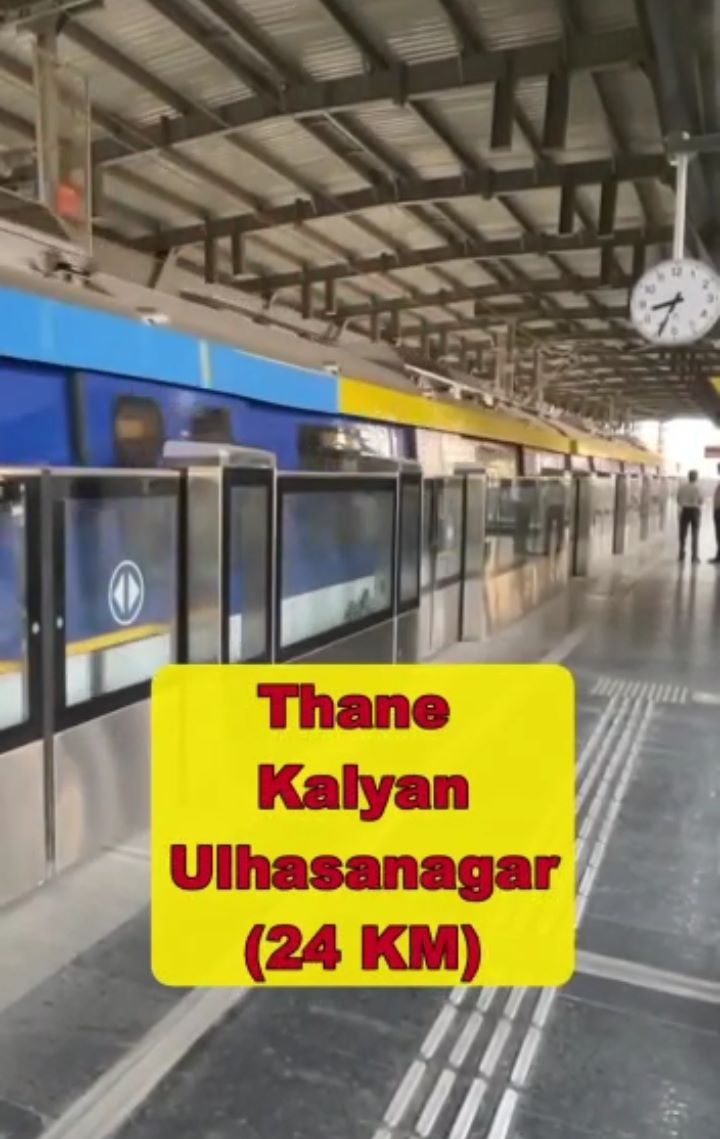
The place, formerly a British military camp known as Kalyan Camp, was named as Ulhasnagar in 1949. Sindhis wanted to name it as Sindhu Nagar
Sindh Courier
Ulhasnagar, India
The work is underway on Sindhu Nagar Metro Station to connect the Ulhasnagar to Mumbai Metro Line 5 that covers 24km distance.
After years of waiting, the residents of Ulhasnagar have a reason to celebrate as their long-standing demand for a Sindhu Nagar station on the Mumbai Metro Line 5 is finally being fulfilled.
According to Indian media reports, on 11th of October, 2019 during BJP party worker’s rally in Ulhasnagar, Shri Devendra Fadnavis, Chief Minister of Maharashtra had assured that Metro Train line will come up to Ulhasnagar. “Metro line 5 project which was originally proposed from Thane Kapurbawdi to Bhiwandi and Kalyan APMC market will be extended till Ulhasnagar and metro station in Ulhasnagar will be named as Sindhu Nagar,” he had announced.

Later, the Mumbai Metropolitan Region Development Authority (MMRDA), had announced its plans to extend the Metro Line 5 from Thane to Kalyan and further to Ulhasnagar via Khadakapada.
This news was also confirmed by BJP MLA Kumar Ailani during a press conference in March this year, bringing joy to the hearts of the people in the region.
Watch a Video about Sindhu Nagar Metro Station
The Mumbai Metropolitan Region Development Authority (MMRDA) announced a significant change in the construction plan for the second phase of the Metro 5 corridor, aiming to expedite the project’s completion. This decision came after careful consideration and receiving approval from the Maharashtra government’s Urban Development Department (UDD).
Reports further said that initially the MMRDA had planned to construct an elevated route for the second phase of the Metro 5 corridor. The elevated metro was designed to connect Kapurbawdi in Thane, traverse Thane Bhiwandi Road, and ultimately reach Rajiv Gandhi Chowk, Rajnoli, and Durgadi in Kalyan. However, in a bid to ensure smoother construction and minimize potential disruptions, the authority had opted to shift to an underground route instead.
 To streamline the construction process further, the MMRDA decided to carry out both the elevated and underground road construction simultaneously. Previously, separate tenders were planned for each section. This strategic adjustment was expected to save time and accelerate the overall progress of the project.
To streamline the construction process further, the MMRDA decided to carry out both the elevated and underground road construction simultaneously. Previously, separate tenders were planned for each section. This strategic adjustment was expected to save time and accelerate the overall progress of the project.
The development of Phase 2 of the Metro Line 5 project faced significant challenges over the past four years. A section spanning 11.8 kilometers between Dhamankar Naka and Temghar encountered opposition from local communities, leading to a halt in construction activities. In response to the situation, the MMRDA made the decision to commence construction on the remaining sections of the route while resolving the issues faced in the disputed area.
Watch a video: Interview about Ulhas Nagar
The Mumbai Metro Line 5 project, with an estimated cost of Indian rupees 8,417 crore, was sanctioned by the MMRDA on December 21, 2017. This ambitious project spans a total length of 24 kilometers and includes a 3-kilometer underground stretch as part of Phase 2, connecting Thane to Kalyan via Bhiwandi.
Ulhasnagar city, formerly a military camp, is densely populated with Sindhi Community which was allotted to them at the time of partition in 1947.

In 1947, this place, then known as Kalyan Camp, had deserted military barracks, originally used in second world war to accommodate soldiers, arms and ammunition. There wasn’t any railway station and there were no shops or any infrastructure in place. It was difficult to thrive in such conditions. Sindhis, with their survival instinct, converted the place in a habitable city and wanted to name it Sindhu Nagar on 8th August, 1949, when the foundation was being laid. Another group wanted to name it as Ulhasnagar as it was situated on the banks of Ulhas River. Both the names inspired by the water.
 Shri C. Rajagopalachari, then the Governor General of India recommended not to fight and asked to go ahead with the temporary name Ulhasnagar, meant to be changed to Sindhu Nagar, once Municipal office turns operational. That’s how city was named as Ulhasnagar in 1949.
Shri C. Rajagopalachari, then the Governor General of India recommended not to fight and asked to go ahead with the temporary name Ulhasnagar, meant to be changed to Sindhu Nagar, once Municipal office turns operational. That’s how city was named as Ulhasnagar in 1949.
Read more: From Pir Jo Goth to Ulhasnagar and beyond
Since then there has been many attempts to change the name of the Ulhasnagar city or the railway station as Sindhu Nagar, but all had failed. In the year 1999, Bala Saheb Thackery of Shiv Sena Party also announced that the name Ulhasnagar will be changed to Sindhu Nagar just like Bombay became Mumbai. Sindhis not only themselves rose like phoenix from ashes but also played a significant role in establishing and flourishing the city by constructing colleges, hospitals, Dharamshalas and markets.
_______________